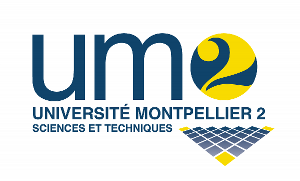The Technical University of Denmark, often simply referred to as DTU, is a polytechnic university and school of engineering. It was founded in 1829 at the initiative of Hans Christian Ørsted as Denmark's first polytechnic, and it is today ranked among Europe's leading engineering institutions. It is located in the town Kongens Lyngby, 12 kilometres (7.5 mi) north of central Copenhagen, Denmark.

The University of Copenhagen is a public research university in Copenhagen, Denmark. Founded in 1479, the University of Copenhagen is the second-oldest university in Scandinavia after Uppsala University.

The Faculty of Health and Medical Sciences at the University of Copenhagen houses 13 departments, 33 centres, five schools, four hospitals, and three libraries.
The Center for Planetary Research at the University of Copenhagen was created in February 2001 when the planetary science groups from the Niels Bohr Institute and the Danish Space Research Institute (DSRI) [Danish: Dansk Rumforskningsinstitut, short DRI or DRKI] were merged. It no longer existed in August 2011. Together with associated national and international groups it aimed to strengthen planetary research in Denmark and to provide a platform for the education of planetary researchers. It spanned a broad range of disciplines from astronomy, physics, geophysics, and space instrumentation to geology and biology.

Montpellier 2 University was a French university in the académie of Montpellier. It was one of the three universities formed in 1970 from the original University of Montpellier. Its main campus neighbors the Montpellier 3 University's main campus, and for this reason the nearest tramway station is named "Universities of Sciences and Literature" rather than "University of Sciences". In January 2015, Montpellier 1 University and Montpellier 2 University merged into the Montpellier University.

The Faculty of Natural Sciences (FNS) is a faculty of the Comenius University in Bratislava.

IPB University is a state-run agricultural university based in the regency of Bogor, Indonesia.

The College of Natural Science (NatSci) at Michigan State University is home to 27 departments and programs in the biological, physical and mathematical sciences.

Syiah Kuala University, abbreviated as USK, founded on 2 September 1961, is the largest and the oldest national university in Banda Aceh, Indonesia. The name of the university is taken from the prominent theologian, Tengku Abdur Rauf As Singkili, who lived in the 16th century.
Science and Technology is a faculty at Aarhus University. Science and Technology offers sixteen BSc degree programmes, eight BEng degree programmes and twenty-eight MSc degree programmes, nine of which are MEng degree programmes. ST also offers a small number of further and continuing education programmes. Niels Chr. Nielsen is the dean of Science and Technology.

The Natural History Museum of Denmark is a natural history museum located in Copenhagen, Denmark. It was created in 2004 through the merger of Copenhagen's Zoological Museum, Geological Museum, Botanical Museum and Central Library, and Botanical Gardens. It is affiliated with the University of Copenhagen. While the Botanical Gardens and the buildings and exhibits of the Geological Museum have been maintained, the old Zoological Museum closed in 2022 and will become part of the new combined Natural History Museum complex in 2025.

Faculty of Science is a faculty of the University of Zagreb that comprises seven departments - biology, physics, chemistry, mathematics, geophysics, geography and geology. The Faculty has 288 full professors, associate and assistant professors, 180 junior researchers and about 6000 students.

The City Campus is one of the University of Copenhagen's four campuses in Copenhagen, Denmark. It is home to the Faculty of Social Sciences and parts of the Faculty of Health and Medical Sciences and the Faculty of Science. The main campus area, the Center for Health and Society, is situated on Øster Farimagsgade, across the street from the University's Botanical Garden, which is also part of the campus area. The City Campus also comprises a building on Øster Voldgade and the university headquarters on Frue Plads.

Frederiksberg Campus is one of the four main campuses of University of Copenhagen in Copenhagen, Denmark. It is located in Frederiksberg and is home to large parts of the Faculty of Science' activities within the fields of natural science and biosciences as well as part of the School of Veterinary Medicine and Animal Science at the Faculty of Health and Medical Sciences, including the University Hospital for Companion Animals. The main campus is located on the west side of Bülowsvej, on both sides of Thorvaldsensvej and Rolighedsvej. It occupies the former grounds of the Royal Veterinary and Agricultural University (KVL) which was merged into the University of Copenhagen in 2007. The main building at Bülowsvej No. 17 is from 1895.
The North Campus is one of the University of Copenhagen's four campuses in Copenhagen, Denmark. It is situated just north of the city centre, across from Copenhagen's largest park, Fælledparken, and between the Østerbro and Nørrebro districts. It is home to the Faculty of Science and the Faculty of Health and Medical Sciences.
The UCPH Department of Geosciences and Natural Resource Management is a department under the Faculty of Science at University of Copenhagen (UCPH).
The UCPH Department of Biology is a department under the Faculty of Science at University of Copenhagen (UCPH). It is organized in 10 sections and is also involved in a number of research centres. The department offer three BSc and four MSc degree programmes. With 400 employees and 1,800 students, it is the largest department at the faculty. It also operates the Øresund Aquarium in Helsingør.

Sovetsky District is an administrative district (raion), one of the 10 raions of Novosibirsk, Russia. It is located on the right and left banks of the Ob River. The area of the district is 89,2 km2. Population: 141,911.

Sumatera Institute of Technology is a public university in South Lampung, Lampung, Indonesia.
















